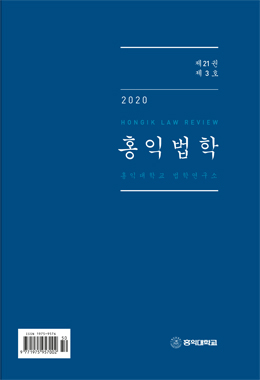등록디자인권 침해 사건에서, 등록디자인에는 상표가 존재하지 않으나 침해제품에 상표가 표시되어 있는 경우, 침해제품에서의 상표의 존재는 특별한 경우가 아닌 한 디자인권 침해판단에 영향을 미치지 않는 것으로 해석하여야 한다. 이러한 결론은 우리 실무에서의 디자인 이용의 법리 또는 단순한 상업적 변형의 법리에 의하여 도출할 수 있다.
침해제품에서의 상표 부분을 포함하여 유사성 판단을 한 결과, 두 디자인이 전체적으로 비유사한 것으로 판단된다고 하더라도, 우리 실무상 인정되는 디자인 이용관계의 법리를 적용하면, 디자인권 침해가 인정될 수 있다. 디자인 이용관계는 선 등록디자인의 본질적 특징 부분이 손상되지 않고 그대로 후 실시디자인(침해디자인)에 포함된 경우에 성립한다. 후 실시디자인(침해제품)이 선 등록디자인의 본질적 특징을 그대로 포함하고 있으면서, 단순히 여기에 새로운 상표를 추가한 것에 불과하면, 디자인 이용관계가 성립되는 것으로 보아야 하고, 따라서 디자인권 침해가 인정된다. 또한, 침해제품에 표시된 상표는 단순한 상업적 변형에 불과한 것으로 취급하여 그 부분을 무시하고 디자인권 침해판단을 할 수 있다. 이 경우 단순한 상표에서의 차이는 디자인권 침해판단에 영향을 미치지 않게 된다.
대상판결의 결론은, 침해제품에 표시된 상표로 인하여 소비자들이 두 제품을 혼동하지 않을 것이므로, 두 디자인은 서로 유사하지 않고, 따라서 디자인권 침해가 성립하지 않는다고 판단한 것이다. 그러나 대상판결의 사안을 우리나라 법원에서 심리를 하게 된다면, 앞서 본 이론에 의하여 디자인권 침해라고 인정될 가능성이 높다.
유럽연합의 공동체디자인법원에서 대상판결의 사안을 판단하였을 경우에도 디자인권 침해라고 인정할 가능성이 높다. 유럽연합의 등록공동체디자인 제도에서는 디자인권 침해판단에서 “같은 대상끼리의 비교”라는 원칙이 확립되어 있다. 등록디자인이 권리범위로 설정한 것만을 비교대상으로 하여야 한다는 것이다. 그에 따르면, 등록디자인에는 상표가 존재하지 않으나 침해제품에만 상표가 표시되어 있는 경우, 등록대상이 아닌 상표부분은 비교의 대상에서 제외하고, 나머지 등록의 대상인 주제끼리만 비교하여 침해판단을 하여야 한다. 이에 따라 상표 부분을 제외하고 비교하면, 두 디자인의 전체적 인상이 동일하여 침해로 인정될 가능성이 높다.
따라서 대상판결의 사안은 우리나라와 유럽연합의 법원 모두에서 미국 항소법원의 판단과 반대의 결론이 나올 가능성이 높다. 그러므로 대상판결은 미국 항소법원의 독자적 판단이라고 할 수 있고, 보편적 결론이라고 보기 어렵다.
If there is no trademark in the registered design, but any trademark is included in the accused design, it should be interpreted that the existence of such trademark does not affect the infringement judgment of the design right unless it is a special case. Such conclusions can be reached by two legal theories.
First, any trademark included in the accused design is merely a commercial modification, and can be regarded as not an important part of the design. Such a part is treated as having a low weight in the comparison process of the design, so any trademark included in the accused design has little influence on the infringement judgment.
Second, as a result of comparison including trademarks, even if both designs are dissimilar entirely, infringement of design rights can be recognized by the legal principle of the design utilize. The design utilize relationship is recognized when the essential features of the registered design are not damaged and are included in the accused design as it is. If the accused design contains the essential features of the registered design as it is, and simply adds a new trademark, the design utilize relationship is recognized. Once the design utilize relationship is recognized, it is a design infringement.
According to any legal principle, the courts in South Korea are likely to admit it is an infringement of design rights as the conclusion of this case.
The Community Design Court of the European Union is highly likely to recognize infringement of design rights. In the European Union, the legal principle of “likewith- like” has been established in the process of design comparison. In comparison of design, only the subject of protection of registered design should be compared. According to the principle, it is determined whether the overall impression is the same only by the remaining patterns (same subject) except for the trademark included in the accused design. In this case, the two designs are likely to have the same overall impression.




